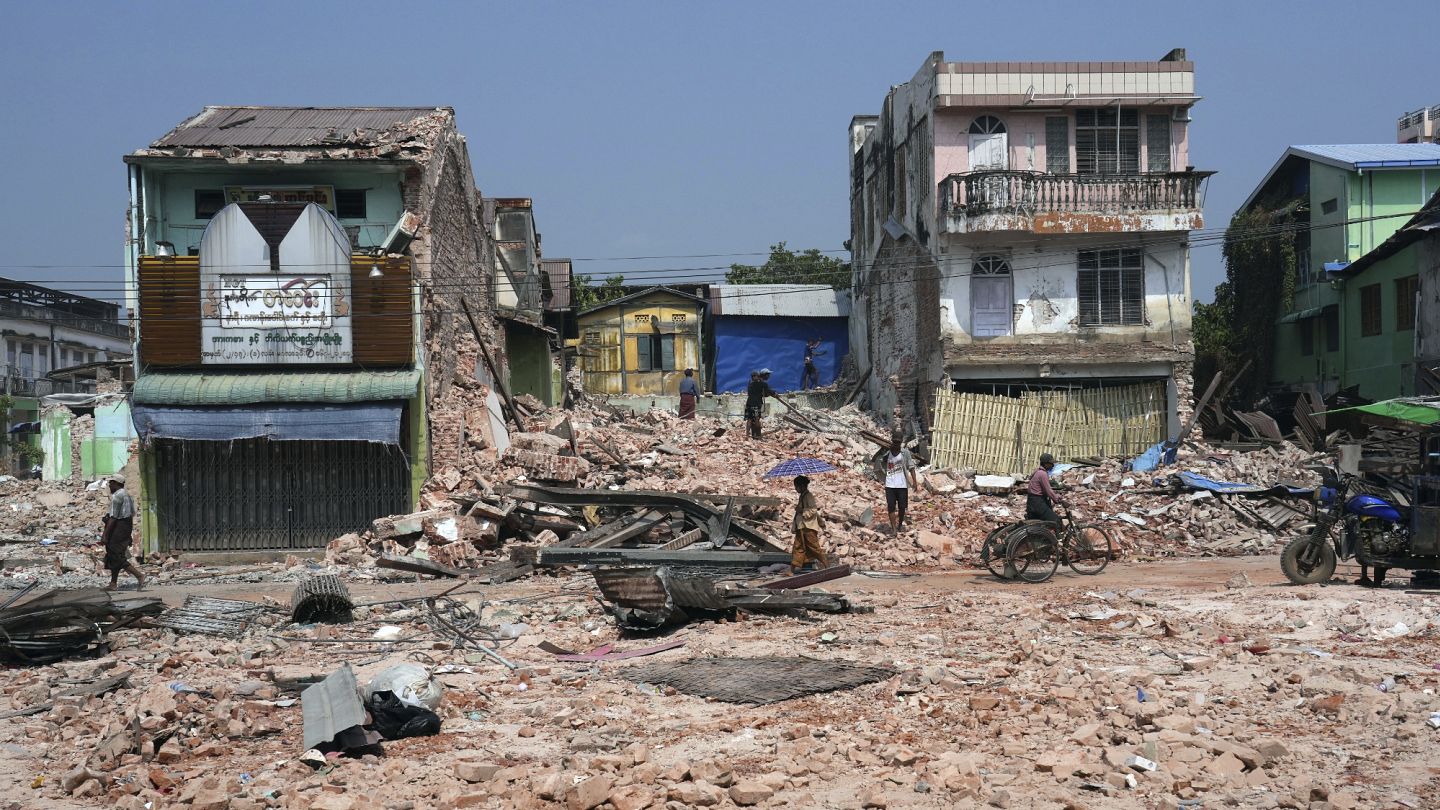Myanmar earthquake survivors in dire need of aid one month on, UN warns
At least 3,770 people were killed by the 7.7 magnitude earthquake that struck on 28 March, with 5,106 injured and 106 still missing.
Hundreds of thousands of people in Myanmar desperately need humanitarian assistance a month after a deadly earthquake, aid agencies have warned.The UN and other humanitarian organisations say that living conditions across the nation remain dire for survivors of the magnitude 7.7 earthquake that struck on 28 March.Even before the quake, the country's ongoing civil war, which started after the military overthrew the democratically elected government in 2021, had displaced more than three million people and left nearly 20 million dependent on humanitarian aid."Critical needs remain for safe shelter, clean water and sanitation, physical and mental health care, comprehensive protection services and cash assistance," the UN Office for the Coordination of Humanitarian Affairs (OCHA) said in its latest situation report.Many who lost their homes are still living in makeshift shelters with little to protect them from pre-monsoon storms ahead of the months-long rainy season, which normally begins in May.The UN also warned of limited access to safe drinking water and clean sanitation, raising the threat of the spread of waterborne diseases.The International Federation of Red Cross and Red Crescent Societies said in its report that displaced people were living outdoors in temperatures of up to 40 degrees Celsius, with an overwhelming fear of further aftershocks.Myanmar’s Department of Meteorology and Hydrology said it recorded 157 aftershocks following the main earthquake, ranging in magnitude from 2.8 to 7.5.Death toll risesState-run MRTV television reported on Monday that the death toll had reached 3,770, with 5,106 people injured and 106 still missing.The earthquake left many areas without power, telephone or mobile phone connection and damaged roads and bridges, in addition to tens of thousands of buildings.In some quake-hit areas, bereaved relatives and friends of the victims offered donations to monks, a Buddhist tradition to transfer merit and blessings to the deceased.MRTV reported that junta chief, Min Aung Hlaing, and his colleagues performed the same ceremony in the capital Naypyidaw.Air strikes continueA report released on Monday by the Myanmar Witness project of the London-based Centre for Information Resilience said the group had documented 80 post-quake air strikes by the military across multiple regions, including 65 after the army declared its unilateral ceasefire on 2 April.Myanmar has been in turmoil since the army’s 2021 takeover ousted the government of Aung San Suu Kyi, which led to nationwide peaceful protests that escalated into an armed resistance, uniting pro-democracy activists and ethnic minority guerrilla groups that have long been fighting for autonomy."Myanmar's population was already on its knees after years of SAC aggression and armed conflict," said Myanmar Witness project director Robert Dolan, referring to the military’s ruling State Administration Council."The layers of suffering are hard to comprehend — we've seen regions wrecked by war and then the earthquake, only to sustain further damage from continued airstrikes."The bombings have primarily targeted civilian areas, including markets, residential areas, Buddhist monasteries and Christian churches, resulting in the deaths of over 200 civilians, including at least 24 children between 28 March and 19 April.That's according to a statement from the shadow National Unity Government, the main opposition group coordinating resistance to military rule.The military government hasn't directly commented on the strikes, but when it extended its ceasefire on 22 April, it said it reserved the right to respond as "necessary" to certain activities by resistance forces.


